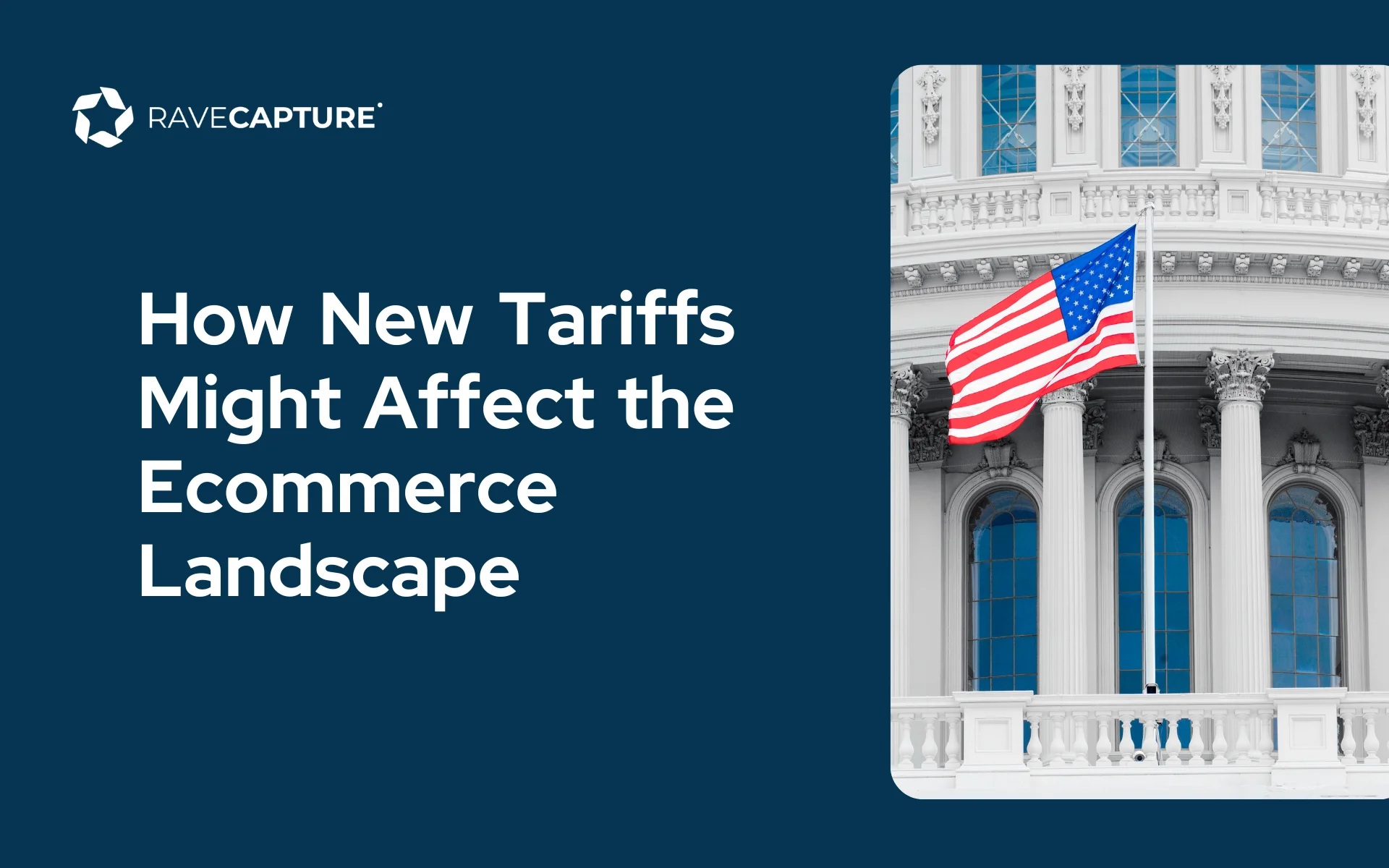With the election of a new president, anticipated changes in trade policies — including significant new tariffs — are expected to reshape the ecommerce sector in the United States.
These tariffs will likely affect supply chains, pricing structures, and customer communication strategies, requiring ecommerce store owners to adopt proactive planning and adaptable approaches.
In this article, we’ll look at how proposed tariffs could impact ecommerce in 2025, offering practical strategies for businesses to maintain resilience and customer trust in an evolving landscape.
The Proposed New Tariffs and Their Scope
President-elect Donald Trump’s proposed tariffs involve broad increases on imported goods, which could directly impact product costs within the ecommerce space. Here’s a breakdown of the tariff structure and expected impact:
- Tariff Rates:
- A general increase of 10-20% on all imports.
- Higher rates targeted at specific countries:
- China: Potential tariffs of 60-100%.
- Mexico: Tariffs ranging from 25-100%.
- Products and Categories Affected:
- Products commonly sold on ecommerce platforms, such as:
- Toys: Prices could increase by 36-55%, making items like a $50 tricycle cost up to $78.
- Apparel and Footwear: Double-digit increases are expected, which could significantly impact retailers of clothing and shoes.
- Household Goods: Higher prices on furniture, appliances, and other essentials impact overall sales.
- Products commonly sold on ecommerce platforms, such as:
- Impact on Households:
- These tariffs could increase annual household spending by up to $7,600.
- Lower-income households, with less flexibility in spending, may feel this impact most strongly, affecting their ability to buy non-essential items.
- Economic Implications:
- With prices rising on imported goods, ecommerce businesses face the challenge of passing these costs on to customers or absorbing them internally, which could strain profit margins.
- This “tax” on imports also can influence consumer behavior, as higher prices on everyday items might reduce discretionary spending on ecommerce platforms.

Supply Chain Strategies to Mitigate New Tariff Impacts
With an increase in import costs not far in sight, such ecommerce businesses accelerate a diversification strategy for their supply chain to help minimize their exposure to tariffed goods, and these are relatively few businesses that can afford to move away from importing merchandise from China, which faces the highest tariffs.
Diversifying suppliers offers the dual advantage of cost control and increased resilience in the face of geopolitical tensions.
Diversification of Suppliers Across the Regions
Ecommerce companies relying heavily on imports from countries like China or even Mexico, targeted with the highest tariffs, should consider suppliers from other places.
For example, moving production to South Korea or other parts of Southeast Asia may be a good option for companies wanting to avoid tariffed merchandise.
Investing in Domestic Manufacturing
While usually challenging for a small business, domestic manufacturing options may be in the best interest of an ecommerce company.
However, due to the current labor shortage and high operational costs in the U.S., domestic production for every business may not be possible.
However, sectors like more automated production capabilities might be of interest to others, such as specific types of consumer electronics or solar cell manufacturing. This approach is also well-positioned with U.S. government priorities to strengthen domestic manufacturing in strategic industries, such as green technologies and lithium-ion batteries.
Utilizing Foreign Trade Zones and Customs Programs
Foreign Trade Zones (FTZs) provide a strategic alternative for companies unable to completely relocate production.
Products admitted to the FTZs in the normal course of business may be exempt from certain tariffs, enabling the company to delay or avoid duties on imported goods.
Programs like the Customs Trade Partnership Against Terrorism (CTPAT) have added advantages, such as preferential customs processing that may avoid delays and help maintain fluidity in supply chains.
The programs result in considerable savings and operational benefits for ecommerce businesses that deal with high-volume imports.
Pricing Strategy Adjustments in Response to Rising Costs
As tariffs raise the baseline cost of goods, ecommerce companies must carefully reevaluate their pricing strategies to protect profit margins while remaining attractive to customers. For many ecommerce businesses, pricing adjustments will be necessary to offset increased import costs.
Calculating Tariff-Adjusted Prices with Realistic Markups
You can calculate new prices by adding the percentage increase directly to each product’s cost.
For example, suppose a business imports a $30 electronic gadget that faces a 25% tariff. In that case, they should calculate whether passing the full increase ($7.50) onto the customer will impact demand or whether a partial price adjustment might be better.
This requires regularly analyzing each product category to identify the impact of rising costs and adjust prices accordingly.
Leveraging Value-Based Pricing and Customer Perception
Ecommerce businesses with loyal customer bases may adopt value-based pricing, which reflects the perceived quality and brand value, allowing for higher markups on certain products.
Customers who associate your brand with quality or unique benefits may be more willing to absorb the price increase.
Brands can emphasize the benefits of their products and how these items compare favorably with competitors, providing more justification for higher prices.
Bundled Offers and Subscription Models
To retain customers despite rising prices, ecommerce companies can consider bundling products at a slight discount or offering subscription options. For example, a brand selling home goods might bundle kitchen tools with a storage solution, adding value without heavily marking each item.
Subscription models offer recurring savings, incentivizing customers to purchase despite price fluctuations. Businesses can also consider loyalty programs that provide small discounts on repeat purchases, helping customers feel they are still getting a good deal.
Customer Communication and Brand Positioning with New Tariffs
Effective communication is crucial when businesses increase prices due to factors beyond their control. Transparent and proactive communication can help customers understand these changes, preserving trust and loyalty.
Explaining Price Changes Proactively
Communicating price changes clearly and promptly helps customers understand the reason behind the adjustments. Businesses should use various channels—email newsletters, website banners, and social media posts—to inform customers of changes due to rising import costs.
For example, if an ecommerce business that imports furniture from China is forced to increase prices, they could explain that the adjustment reflects tariff-related cost increases rather than arbitrary price hikes.
Emphasizing Quality and Brand Values
Alongside explanations of cost adjustments, ecommerce businesses should reinforce their brand’s commitment to quality and value. Messaging highlighting efforts to keep products accessible and affordable will help foster customer loyalty. For instance, a company might communicate how it is sourcing responsibly, exploring alternatives to keep prices stable, or maintaining high product standards despite challenging trade conditions.
Providing Consistent Customer Support for Inquiries
As customers see higher prices, questions are likely to arise. Clear, consistent responses to customer inquiries about price changes demonstrate accountability and reassure customers that they remain a priority.
Ecommerce businesses could set up dedicated customer service channels or update FAQ sections to address common questions, alleviating confusion or frustration.
Businesses can use platforms like RaveCapture to collect valuable feedback and reviews to help gauge customer sentiment around price changes and maintain brand trust. With direct insights into customer perceptions, companies can fine-tune their messaging and adjust strategies to better align with customer expectations, especially during significant cost changes.
Contingency Planning for Future Trade Policy Changes
Given the unpredictability of trade policies, ecommerce businesses will benefit from preparing for potential policy shifts.
Building resilience through flexible sourcing, financial planning, and scenario-based strategies is essential in an uncertain environment.
Monitor Trade Policy Updates and Legislative Changes
Staying informed of trade policy changes is key to preparing for future adjustments. Ecommerce companies should monitor sources like the Federal Register and Capitol Hill updates to remain aware of any modifications to tariff rates, regulatory changes, or international trade developments. This proactive approach enables companies to act quickly by adjusting supplier agreements or finding alternative sourcing.
Build a Financial Cushion for Tariff-Related Costs
To manage fluctuating costs, ecommerce businesses should consider setting aside a reserve fund specifically for handling tariff-related expenses. Such funds can help absorb sudden increases in import costs without compromising day-to-day operations.
For larger ecommerce businesses, exploring tariff insurance options can also provide financial security in case of unexpected trade disruptions. These funds will allow firms to meet customer expectations, even with rising costs.
Scenario-Based Planning for Various Tariff Outcomes
Developing contingency plans based on different tariff scenarios can help businesses stay prepared for changes.
For example, ecommerce businesses could create a “high-tariff” scenario where they project costs with tariffs as high as 100% on certain products. Based on these scenarios, companies can draft phased response plans, including diversifying products, testing new suppliers, and updating customer communication strategies.
By preparing responses for various outcomes, businesses can avoid reactionary decisions and maintain operational stability. This planning is especially useful for sectors likely to be impacted by tariffs on strategic industries such as consumer electronics, lithium-ion batteries, and other critical minerals essential for a range of high-demand products.
Adapting to an Evolving Ecommerce Environment
With so many possible changes to trade policies, 2025 will be a new year of trials and opportunities for ecommerce businesses.
Ecommerce firms can build resilience in uncertainty by proactively adapting supply chains, reviewing pricing strategies, and being open with customers.
The implementation of flexible strategies now will help ecommerce owners overcome every challenge that might come up and stay competitive en route to sustainable growth while trade policies are evolving.
It is also important that ecommerce businesses, while adapting to the changed trade policies, engage customers through RaveCapture and elicit their feedback to understand customer concerns and build trust.

